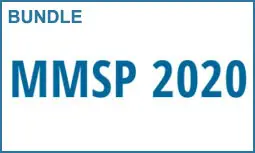Audio-Fingerprinting via Dictionary Learning
Chrisitna Saravanos, Dimitris Ampeliotis, Kostas Berberidis
-
Members: FreeSPS
IEEE Members: $11.00
Non-members: $15.00Length: 05:35
22 Sep 2020
In recent years, several successful schemes have been proposed to solve the song identification problem. These techniques aim to construct a signal’s audio-fingerprint by either employing conventional signal processing techniques or by computing its sparse representation in the time-frequency domain. This paper proposes a new audio-fingerprinting scheme which is able to construct a unique and concise representation of an audio signal by applying a dictionary, which is learnt here via the well-known K-SVD algorithm applied on a song database. The promising results which emerged while conducting the experiments suggested that, not only the proposed approach preformed rather well in its attempt to identify the signal content of several audio clips –even in cases this content had been distorted by noise - but also surpassed the recognition rate of a Shazam-based paradigm.



